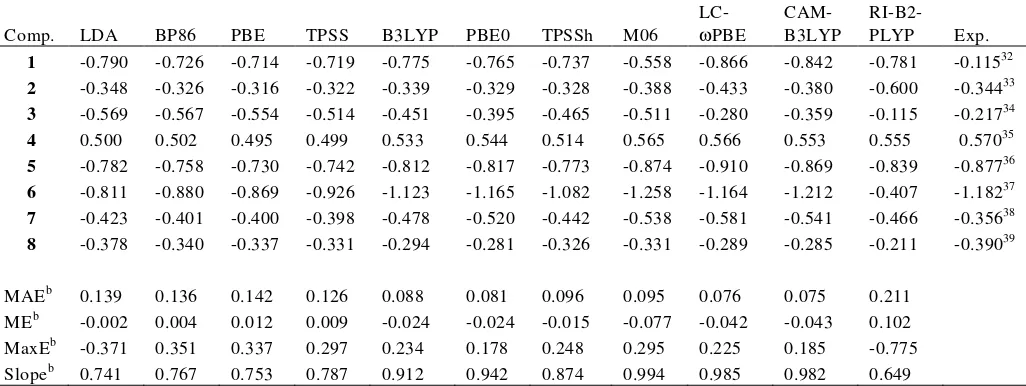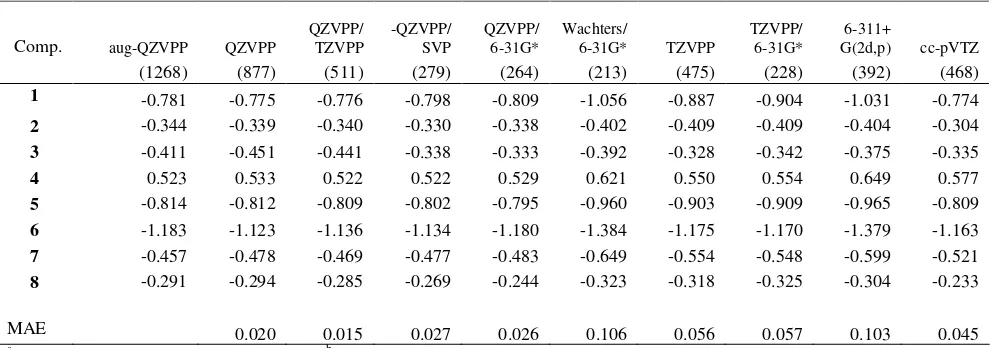Electric field gradients of transition metal complexes from density functional theory : assessment of functionals, geometries and basis sets
Full text
Figure


Related documents
The increase in porosity also depends on the carrier properties, for instance, solid dispersions containing linear polymers produce larger and more porous particles than
B.: Congenital atresia of the inferior vena cava, common iliac veins, and left innominate vein; a case with extensive development of superficial venous col-
Aus diesem Grund soll in der vorliegenden Studie speziell der genetische Einfluss auf Tagesmüdigkeit und Auf- merksamkeit durch verschiedene subjektive und objektive Testmethoden
Für die Elektroporationen wurden daher zwei Programme für humane dermale Fibroblasten ausgewählt, wobei das eine für neonatale (U-20) und das andere für adulte Zellen (U-23)
Table A31: Crystallographic data of α -CaSiN 2 [14] compared to calculated values (atomic param-. eters: (1) experimental coordinates, (2) coordinates from LDA calculation,
As to non-empty space for the electromagnetic domain, a continuously distributed elementary charge was reasonably inferred by Mie in order to derive properties of charges
We present the results of an investigation of the hadronic leading order anomalous magnetic moments of the electron, muon and tau lepton from first principles in twisted mass
In the following, the event selection used in the three analyses will be presented (Section 2) before describing the SM background estimation techniques (Section 3).. The last